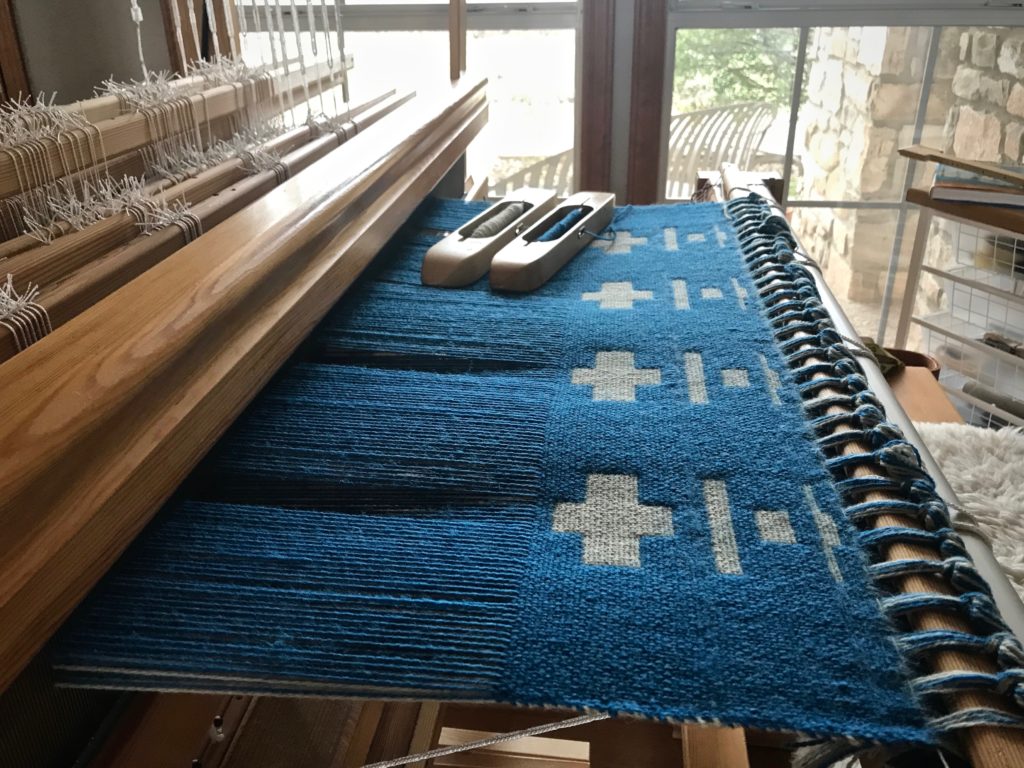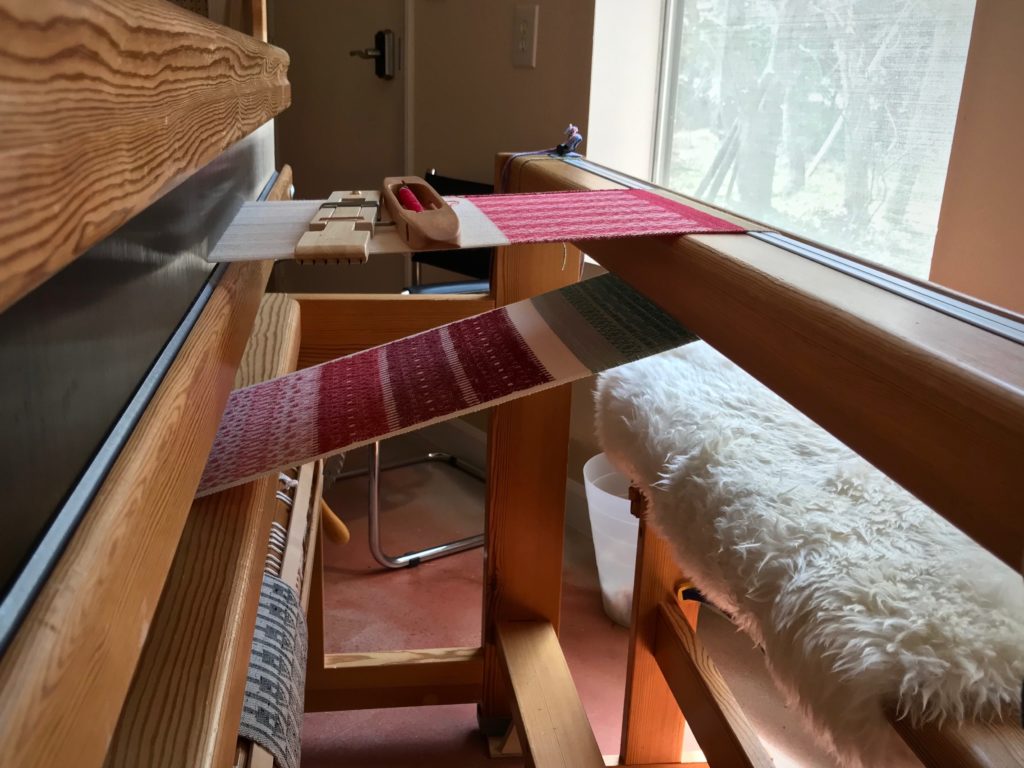It took me seven years of study, practice, and mistakes to complete this rigorous Swedish weaving curriculum! You have been with me through much of it right here. I’m talking about The Big Book of Weaving, by Laila Lundell. I made it through the book, sequentially, page by page, warp by warp. 43 warps in all! Remember the blue 12-shaft double-weave blanket I had on the loom in June? That is the final project in the book.

In the short video below, each completed project is presented in order in our Texas hill country home. Watch to the end to see the blue blanket in all its finished glory.
For nitty-gritty details, check out The Big Book of Weaving tab at the top of the page.
I. Secrets to success:
- mindset of a student
- determination
- eyes on the goal
- no option other than completion
One loom dedicated to the book.
II. Lessons learned:
- technique
- processes
- planning
- drafting
- Swedish practices
Any mistake can be remedied.
III. Treasures gained:
- patience
- humility
- endurance
- focused attention
- problem solving
- creative freedom
Confidence.
IV. Prized perspectives:
- new experiences
- delight of dressing the loom
- wonder of cloth-making
- fresh ideas
- joy of discovery
- knowledge and understanding of the loom
Getting lost and absorbed in the whole process of weaving.
V. Favorite project: Old-Fashioned Weaving / Monksbelt (at 4:46 in the video)
Are we determined students of heavenly things? Oh, to know God’s will! Study what’s written, don’t lose heart, eyes on the prize, no option besides completion through Jesus Christ. One life dedicated to know him. Day by day, warp by warp, the Grand Weaver teaches us. We can know God’s will.
May you be a lifelong learner.
Happy Weaving to you,
Karen


























